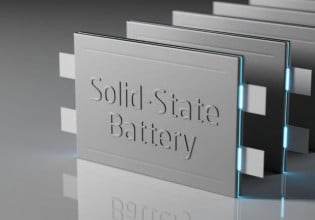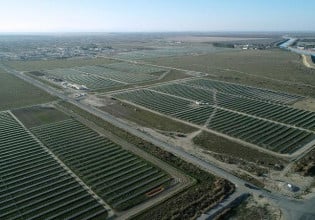‘REDi’ for Hydro: Virtually Visualizing Hydropower’s Potential
The National Renewable Energy Laboratory has pioneered a virtual space with the help of engineers and design teams to showcase current research and offer innovative tools for a wide variety of audiences.
The power of water is often evident through its destruction. As extreme weather events increase across the globe, hurricanes, floods, and tsunamis are reminders of the inherent dangers of this power, but researchers at the National Renewable Energy Laboratory (NREL) are trying to help reimagine the generative capabilities of hydropower that can make transformative contributions to the stabilization of a clean energy grid.
NREL has teamed up with engineers and researchers to create Renewable Energy Discovery Island (REDi) to allow people of all ages of age and expertise to envision the present and future potential of hydropower.
NREL’s virtual interactive platform includes simulations of how conventional dams work to produce hydropower. Image used courtesy of NREL
The Untapped Potential of Hydropower
Hydropower occupies a critical place in the clean energy space and serves as a complement to solar and wind innovations that can dominate clean energy discourse. In fact, according to the U.S. Energy Information Administration (EIA), hydropower has been historically dominant in the energy sector, and it is only in recent years that other renewable energy sources have been catching up to match the proportional contributions hydropower has been making.
According to the EIA, the role of hydropower remains central to national electricity needs. However, experts assert that hydropower has yet to reach its full potential, and there are major strides still to be taken on the way to harnessing the power that water offers the clean energy sector. One cornerstone of this potential is the inherent flexibility of hydropower, which can be deployed at will with certain equipment setups that circumvent natural fluctuations in water availability.
NREL researcher Matthew Mowers and his colleague Stuart Cohen, a senior modeling engineer, published a report in 2022 that examined untapped hydropower potential and mapped out how hydropower plant owners and facility managers might improve existing operations. This potential is rooted in the ability of a hydropower plant to respond dynamically to the needs of the grid, increasing and decreasing power output as needs fluctuate and emergencies arise. Hydropower has some limiting constraints, such as geographical location, water flow requirements, and other demands that must be prioritized. However, the control we can exert over hydropower output remains an attractive characteristic of this clean energy staple.
Research Access and Increasing Awareness
In order to reach current engineers, future pioneers, and students who are preparing for a career in the clean energy sector, NREL has developed a dynamic online learning and information hub that puts a spotlight on various hydropower projects and offers tools for thinking through potential design plans.
Video used courtesy of NREL
The Renewable Energy Discovery Island (REDi) offers a wide variety of virtual exploration tools for audiences who vary in age and expertise. The developers who come from both the engineering and design spheres have created a space to fire the curiosity of the young and stimulate the research inclinations of more advanced members of the community. Virtual “waystations” spotlight everything from marine energy technology to desalination, and the incredible videos offer a look inside this technology and show viewers how projects such as offshore wave energy converters can contribute to our collective movement toward clean energy.
The Future of Hydropower and Pumped Storage Systems
REDi Island also features pumped storage hydropower (PSH) systems which are likely to play a primary role in our clean energy future. These systems function similarly to a large battery by utilizing a simple arrangement of two reservoirs at different elevations. As water cascades from the higher elevation reservoir to the lower one, it passes through a turbine, thus generating power that can be conveniently stored and deployed as energy needs arise. This dispatchability makes PSH systems uniquely able to provide energy on demand, and currently, in the United States, 93 percent of all utility-scale energy storage comes from PSH, according to the U.S. Department of Energy.
Virtual rending of a PSH system. Image used courtesy of NREL
REDi Island offers students, educators, developers, and engineers a tool to understand current research or even scope out practical sites for PSH projects. The possibilities for hydropower are substantial, and this virtual world helps hold this potential at your fingertips.








